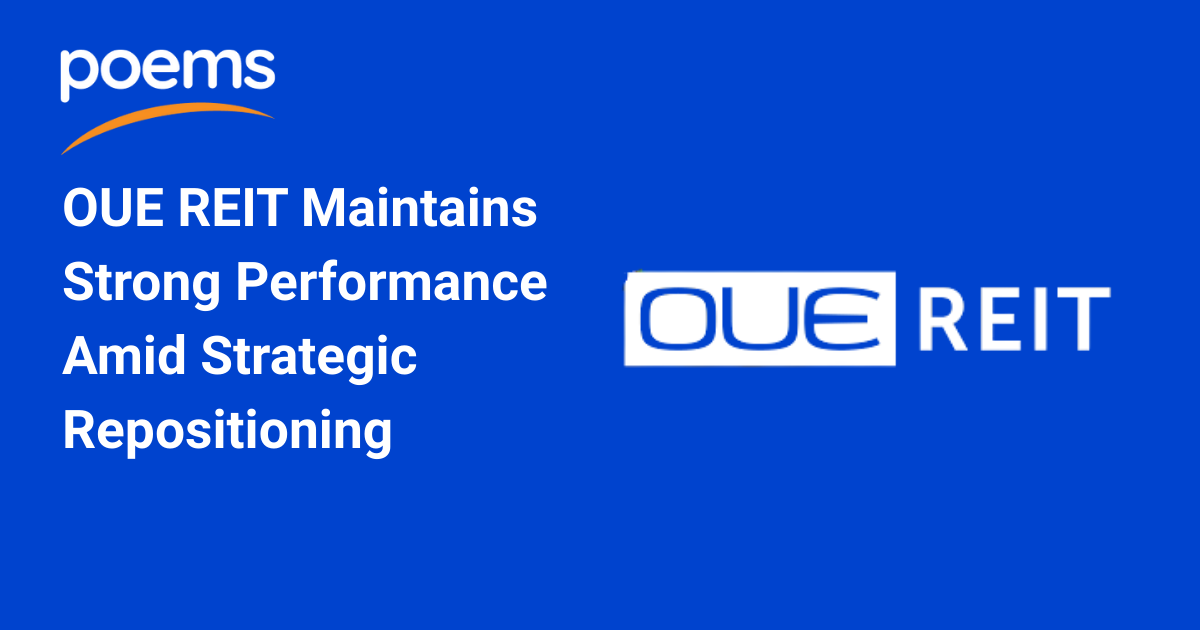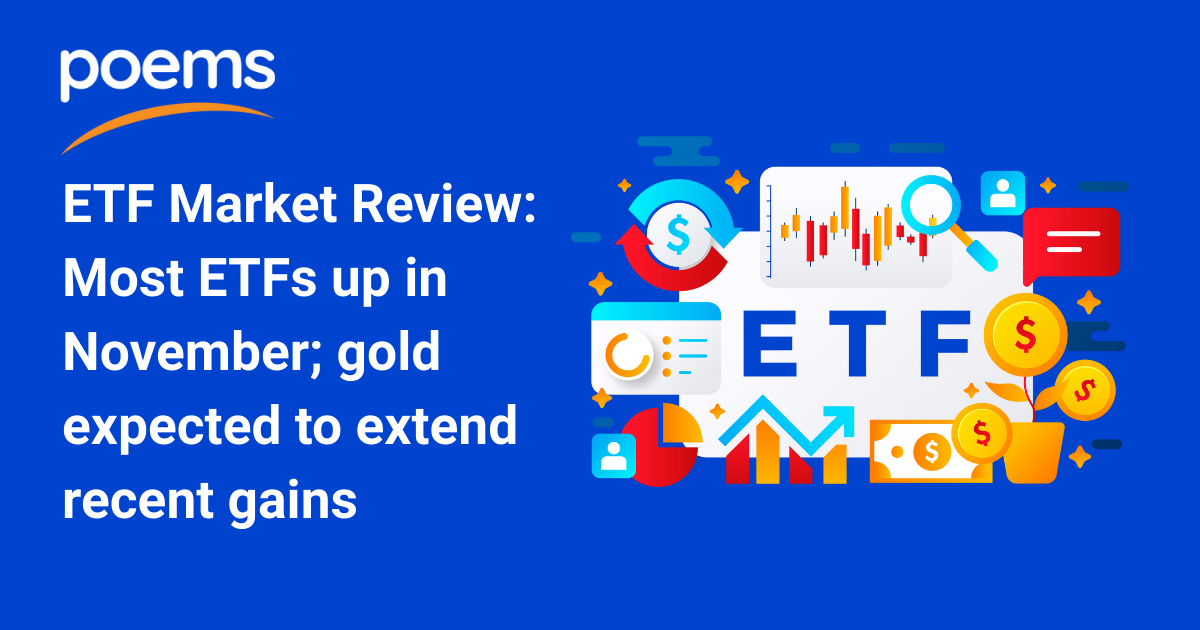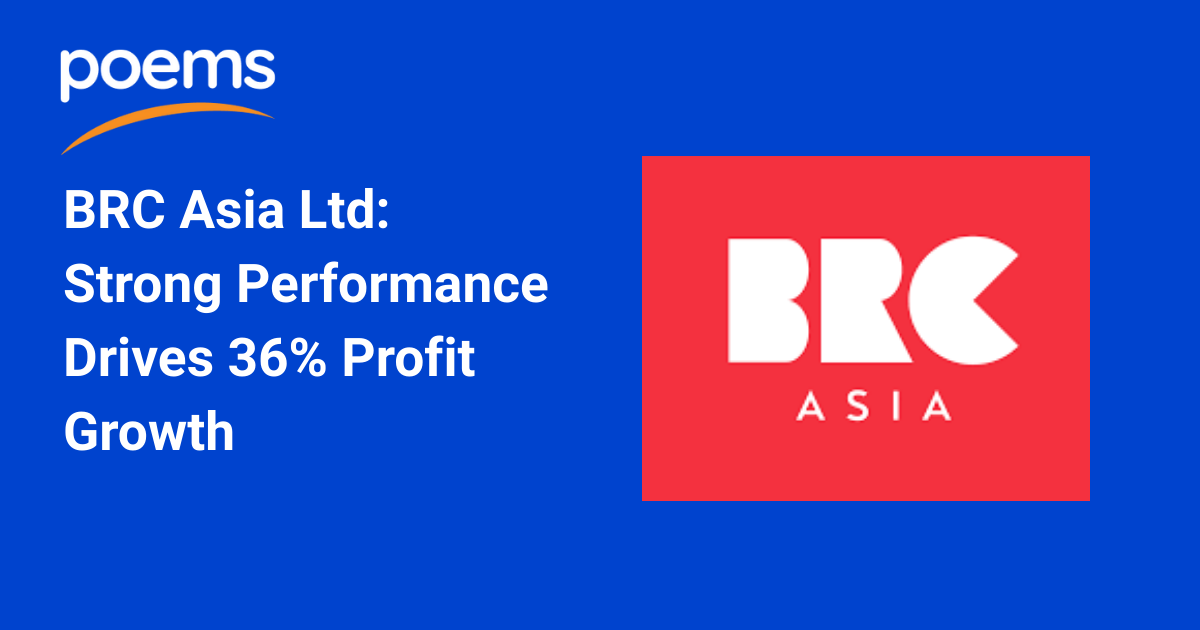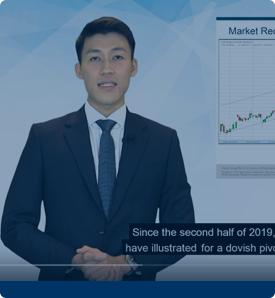Small-Cap Value Funds
Investing in the stock market can be exhilarating and intimidating at the same time. One of many options available today is some small-cap value funds, which have gained much attention as capable delivery vehicles for tremendous returns. This guide comprehensively explains small-cap value funds, their performance dynamics, associated risks, investment strategies, and more. By the end, you will be well-equipped to make informed decisions regarding small-cap value funds.
Table of Contents
What Are Small-Cap Value Funds?
Small-cap value funds are equity mutual funds or exchange-traded funds (ETFs) focused on the stocks of undervalued small-size companies. The companies concerned trade at low price-book (P/B), low price-earnings ratio (P/E), and price-cash flow ratio (P/CF), making them an excellent investment opportunity for capitalising on future growth and market corrections.
What Are Small-Cap Value Stocks?
The market capitalisation of companies associated with smaller-cap stocks would range from USD 300 million to USD 2 billion. Value also means the stock’s price is lower than the calculated intrinsic value derived from other financial metrics, such as earnings, assets, or cash flow.
Important Characteristics
- Market Capitalisation:
Small-cap companies are largely at the lower ranks. They are mainly in the growth stage and also have room for growth.
- Value Metrics:
“Value” refers to how these companies trade cheaper at their estimated intrinsic values than the market values.
Valuation metrics involved
- Low P/B ratios
- P/E ratios
- In high dividend yields in some cases
- Growth Potential:
Many small-cap value stocks are in industries or sectors that have growth prospects but are experiencing cyclical headwinds that temporarily make the investment less appealing to investors. However, these stocks provide value to long-term investors.
- Risk and Volatility:
Small-cap value funds are more volatile than large-cap funds because the underlying companies are relatively small and hence easily susceptible to market conditions.
Understanding Small-Cap Value Funds
To understand small-cap value funds, it is essential to understand their makeup, the companies they focus on, and how fund managers work.
Investment Universe
Small-cap value funds primarily target companies showing these characteristics:
- Lower Market Valuations: Stocks trading at a discount relative to their intrinsic value.
- Growth Potential: Businesses showing promise in future earnings and market potential.
- Financial Resilience: Businesses with sound fundamentals, despite market mispricing.
- Undervalued Sectors: Often, these funds invest in sectors experiencing temporary downturns but with a positive long-term outlook.
Fund Manager Strategies
Fund managers play a pivotal role in identifying suitable small-cap value stocks. Their strategies often involve:
- Thorough Financial Analysis: Examining a company’s health through profitability and growth metrics.
- Industry Trends: Identifying sector-specific trends that may drive the stocks.
- Valuation Techniques: Using fundamental analysis to find those stocks selling below their true value.
- Diversification: Spreading investments across different sectors and industries to mitigate risks.
- Active or Passive Management: Some funds are actively managed, while others track a small-cap value index.
Performance and Risk of Small-Cap Value Funds
Historical Performance Trends
Historically, small-cap value funds have shown the possibility of beating other asset classes for long-term returns. Using financial data, it’s clear that small-cap value stocks in the US stock market have offered much more solid returns than large-cap and growth stocks during some periods.
As examples:
- 5-Year Average Return: Approximately 11%–15% every year, depending on which fund and market condition has prevailed.
- 1-Year Returns (2023): Some funds have reported more than 30% yields because of market recoveries and undervalued opportunities.
It is worth noting that although the performance of small-cap value funds in the past has been encouraging, past results alone are not a predictor of future performance.
Risk Considerations
Investing in small-cap value funds has natural risks, such as the following:
- Market Volatility: Small-cap stocks are more volatile than large-cap stocks, which means that price swings are increasing.
- Economic Sensitivity: These equities are generally more sensitive to macroeconomic factors.
- Liquidity Risk: Small firms’ low trading volumes result in lower market liquidity, which increases the prospect of price impact during a purchase or sale.
- Company-Specific Risks: Bad management, debt, and operational problems are some of the factors that can seriously affect small-cap companies. Before investing capital, these risks must be compared with investment goals and time horizons.
Investment Strategies in Small-Cap Value Funds
- Long-Term Investment Horizon
Small-cap value stocks may also require some time to see their real market value. An indicative holding period of 5–10 years will also help these companies grow, recover from temporary failure, and get maximum returns.
- Diversification
The diversification in small-cap value funds will act as an important tool of risk management. Diversified funds invest in several sectors and industries to ensure that the failure of the stocks does not have a strong effect on the fund.
- Active Monitoring
Small-cap value funds should periodically be reviewed to ensure proper performance. Investors, too, must be well-equipped with market conditions to identify assets or sectors that may not perform and make strategic adjustments in those areas.
- Dollar-Cost Averaging
The fixed amount invested periodically will reduce the impact of market volatility. The strategy will ensure the purchase of more shares at lower prices and fewer at higher prices, which will average the cost in the long run.
Examples of Small-Cap Value Funds
Several well-reputed small-cap value funds exist, especially in developed markets like the United States. Below are some examples of small-cap value funds, with their unique strategies, performance, and benefits to investors.
- Vanguard Small-Cap Value Index Fund (VSIAX)
It is a favourite investment option for those who want to access a diversified portfolio of small-cap value stocks. The fund tracks the CRSP US Small-Cap Value Index, which contains a wide range of undervalued companies across all sectors.
Key features
- Low Expense Ratio: The expense ratio of the Vanguard Small-Cap Value Index Fund is extremely low, at 0.07%. This makes it one of the ideal choices for long-term investors seeking minimal investment costs.
- Diversification: The fund invests in hundreds of small-cap stocks, providing broad market exposure while minimising the risks associated with individual stock performance.
- Performance: The fund has historically delivered consistent returns aligned with the overall small-cap value segment and outperformed many actively managed alternatives over extended periods.
This fund appeals to passive investors who care more about low costs and broad exposure to small-cap value stocks. Hence, it can be used as a cornerstone for diversifying portfolios.
- Dimensional U.S. Targeted Value Portfolio (DFFVX)
Dimensional Fund Advisors runs an actively managed fund with a target of small-cap value stocks with high profitability. This follows the use of stringent filters that look for companies that, at attractive valuations, show a solid base.
Key Features
- Active Management: The fund has active management, and the managers can spot specific opportunities and react to any changes in market conditions.
- High-quality metrics: The portfolio’s investments are based on strong profitability metrics, which act as a buffer to balance the intrinsic risks within small-cap investing.
- Expense Ratio: Although higher than index funds, the expense ratio of around 0.44% is competitive for an actively managed fund.
This fund is ideal for investors who want a more hands-on approach to small-cap value investing, with a chance of higher returns because of strategic stock selection.
- TIAA-CREF Small-Cap Blend Index Fund (TISBX)
The TIAA-CREF Small-Cap Blend Index Fund tracks the Russell 2000 index and combines the features of small-cap value and growth stocks, thus giving exposure to a mix of the best value and growth stock opportunities in the small-cap universe.
Key Features
- Broad Exposure: This will include undervalued and high-growth stocks within the small-cap market.
- Low Expense Ratio: The fund’s expense ratio is 0.06%, making it very cost-effective. Therefore, minimal drag on returns will occur.
- Stability and Balance: The blending strategy will reduce volatility as the investor diversified across value and growth stocks.
This fund suits investors seeking a middle ground between value-focused and growth-oriented small-cap funds. It offers steady growth potential without excessive risk.
Frequently Asked Questions
Know how much risk you can take given your financial goals and investment time horizon.
- Diversify portfolio: Invest in asset classes and funds that lower general risk.
- Research Thoroughly: Before investing in that fund, know the prior performance of the fund management strategy and check your expense ratio.
- Stay disciplined: Avoid decisions made when short-term market movements come into play.
- Seek professional Advice: Seek a financial consultant for individualised investment advice.
The impact of corporate actions, including mergers and acquisitions, stock splits, and declaration of dividends, is enormous on small-cap value funds. For instance,
- Mergers and Acquisitions: A large corporation’s takeover of a small-cap company immediately increases the price and the subsequent gain to the fund.
- Dividends: Small-cap value funds of firms with stable dividend payments tend to boost the investment’s net return.
- Stock Splits: When companies have a stock split, their value does not alter, but they increase liquidity, attracting many more investors to that firm.
Investment Focus:
- Investment in an investor value fund is in undervalued stocks. Sinvest funds invest in companies that can, which may have a relatively high valuation.
Risk Profile:
- Growth funds have a higher risk profile; instead, value funds may be relatively stable for investment.
Return Prospect:
- The value fund would provide stable returns in the long run. On the other hand, a growth fund will give more significant returns with increased risks.
- Diversification: This refers to spreading investments in various companies and sectors.
- Regular Monitoring: Monitor fund performance and rebalance according to need.
- Set Realistic Goals: Understand that small-cap value funds take time to produce significant returns.
- Education: Keep abreast of the market trends and economic conditions affecting small-cap stocks.
- Expense Ratio: Lower expense ratios are preferred since they reduce the investment cost.
- Performance History: Check the fund’s performance history over 1, 3, and 5 years.
- Portfolio Composition: Seek diversification across industries and geographies.
- Management Team: Experience and reputation of the fund managers in managing the funds
- Liquidity: Trade volume will ensure ease of joining and leaving.
Related Terms
- Funding Ratio
- Enhanced Index Fund
- No-Load Fund
- Back-End Load Funds
- Appreciation Funds
- International Value Funds
- Debt Funds
- Pension Funds
- Broad Market Index Funds
- Mid-cap value funds
- Large Cap Value Funds
- Sector Specific Value Funds
- Ultra-Short Bond Funds
- Sub-Advised Fund
- Provident Fund
- Funding Ratio
- Enhanced Index Fund
- No-Load Fund
- Back-End Load Funds
- Appreciation Funds
- International Value Funds
- Debt Funds
- Pension Funds
- Broad Market Index Funds
- Mid-cap value funds
- Large Cap Value Funds
- Sector Specific Value Funds
- Ultra-Short Bond Funds
- Sub-Advised Fund
- Provident Fund
- Sovereign Wealth Funds
- Management Fees
- Clone Funds
- Net asset value per unit
- Closed-End Funds
- Fixed Maturity Plans
- Prime Money Market Fund
- Tax-Exempt Money Market Fund
- Value Fund
- Load Fund
- Fund Family
- Venture Capital Fund
- Blue Chip Fund
- Back-end loading
- Income fund
- Stock Fund
- Specialty Fund
- Series fund
- Sector fund
- Prime rate fund
- Margin call
- Settlement currency
- Federal funds rate
- Sovereign Wealth Fund
- New fund offer
- Commingled funds
- Taft-Hartley funds
- Umbrella Funds
- Late-stage funding
- Short-term fund
- Regional Fund
- In-house Funds
- Redemption Price
- Index Fund
- Fund Domicile
- Net Fund Assets
- Forward Pricing
- Mutual Funds Distributor
- International fund
- Balanced Mutual Fund
- Value stock fund
- Liquid funds
- Focused Fund
- Dynamic bond funds
- Global fund
- Close-ended schemes
- Feeder funds
- Passive funds
- Gilt funds
- Balanced funds
- Tracker fund
- Actively managed fund
- Endowment Fund
- Target-date fund
- Lifecycle funds
- Hedge Funds
- Trust fund
- Recovering funds
- Sector funds
- Open-ended funds
- Arbitrage funds
- Term Fed funds
- Value-style funds
- Thematic funds
- Growth-style funds
- Equity fund
- Capital preservation fund
Most Popular Terms
Other Terms
- Compound Yield
- Brokerage Account
- Discretionary Accounts
- Industry Groups
- Growth Rate
- Green Bond Principles
- Gamma Scalping
- Free-Float Methodology
- Foreign Direct Investment (FDI)
- Floating Dividend Rate
- Flight to Quality
- Real Return
- Protective Put
- Perpetual Bond
- Option Adjusted Spread (OAS)
- Non-Diversifiable Risk
- Merger Arbitrage
- Liability-Driven Investment (LDI)
- Income Bonds
- Guaranteed Investment Contract (GIC)
- Flash Crash
- Equity Carve-Outs
- Cost of Equity
- Cost Basis
- Deferred Annuity
- Cash-on-Cash Return
- Earning Surprise
- Capital Adequacy Ratio (CAR)
- Bubble
- Beta Risk
- Bear Spread
- Asset Play
- Accrued Market Discount
- Ladder Strategy
- Junk Status
- Intrinsic Value of Stock
- Interest-Only Bonds (IO)
- Interest Coverage Ratio
- Inflation Hedge
- Industry Groups
- Incremental Yield
- Industrial Bonds
- Income Statement
- Holding Period Return
- Historical Volatility (HV)
- Hedge Effectiveness
- Flat Yield Curve
- Fallen Angel
- Exotic Options
- Execution Risk
Know More about
Tools/Educational Resources
Markets Offered by POEMS
Read the Latest Market Journal

LHN Reports Strong Growth Momentum Driven by Coliwoo Expansion
Company Overview LHN Ltd is a Singapore-based company operating in the co-living and property development sectors. Through its Coliwoo brand, the company has positioned itself as a key player in the growing co-living market, while also maintaining interests in property development and other business segments. Strong Financial Performance Drives Optimism LHN Ltd delivered impressive results in the second half of 2025, with earnings exceeding Phillip Securities Research's expectations. The company's full-year 2025 revenue and profit after tax and minority interests reached 100% and 109% of forecasts, respectively. This strong showing was primarily driven by a substantial jump in co-living earnings, highlighting the company's strategic focus on this growing market segment. The company also announced an increase in dividend distribution, with final and special dividends totalling S$0.03, up from S$0.02 in the previous fiscal year. Aggressive Expansion Plans for Coliwoo The expansion trajectory for LHN's Coliwoo co-living platform remains exceptionally strong, with significant room inventory growth on the horizon. Currently, 714 rooms are undergoing renovation, with an additional 1,500 rooms in the planning pipeline. This expansion represents a remarkable 75% increase from the existing base of 2,933 rooms. The company has identified diverse opportunities across multiple property types, including hotel licenses, student accommodations, commercial buildings, and management contracts. LHN’s management has set an ambitious target of adding approximately 800 rooms annually, translating to a compound annual growth rate of around 27%. Investment Recommendation and Valuation Phillip Securities Research maintains a BUY recommendation for LHN Ltd, though it has adjusted its valuation methodology following the listing of Coliwoo. The research team now employs a sum-of-parts valuation approach, moving away from its previous 13 times price-to-earnings ratio method. Under this new framework, Coliwoo is valued on a mark-to-market basis with a 10% discount, property development assets at book value, and other remaining business operations at 10 times price-to-earnings. The target price has been revised from S$1.13 to S$0.85. Despite this adjustment, the investment case remains compelling, supported by higher expected dividend yields and new growth areas, including storage space and facilities management businesses. The stock offers attractive valuations with a dividend yield near 6% and an adjusted price-to-book ratio of 0.9 times. This article has been auto-generated using PhillipGPT. It is based on a report by a Phillip Securities Research analyst. Disclaimer These commentaries are intended for general circulation and do not have regard to the specific investment objectives, financial situation and particular needs of any person. Accordingly, no warranty whatsoever is given and no liability whatsoever is accepted for any loss arising whether directly or indirectly as a result of any person acting based on this information. You should seek advice from a financial adviser regarding the suitability of any investment product(s) mentioned herein, taking into account your specific investment objectives, financial situation or particular needs, before making a commitment to invest in such products. Opinions expressed in these commentaries are subject to change without notice. Investments are subject to investment risks including the possible loss of the principal amount invested. The value of units in any fund and the income from them may fall as well as rise. Past performance figures as well as any projection or forecast used in these commentaries are not necessarily indicative of future or likely performance. Phillip Securities Pte Ltd (PSPL), its directors, connected persons or employees may from time to time have an interest in the financial instruments mentioned in these commentaries. The information contained in these commentaries has been obtained from public sources which PSPL has no reason to believe are unreliable and any analysis, forecasts, projections, expectations and opinions (collectively the “Research”) contained in these commentaries are based on such information and are expressions of belief only. PSPL has not verified this information and no representation or warranty, express or implied, is made that such information or Research is accurate, complete or verified or should be relied upon as such. Any such information or Research contained in these commentaries are subject to change, and PSPL shall not have any responsibility to maintain the information or Research made available or to supply any corrections, updates or releases in connection therewith. In no event will PSPL be liable for any special, indirect, incidental or consequential damages which may be incurred from the use of the information or Research made available, even if it has been advised of the possibility of such damages. The companies and their employees mentioned in these commentaries cannot be held liable for any errors, inaccuracies and/or omissions howsoever caused. Any opinion or advice herein is made on a general basis and is subject to change without notice. The information provided in these commentaries may contain optimistic statements regarding future events or future financial performance of countries, markets or companies. You must make your own financial assessment of the relevance, accuracy and adequacy of the information provided in these commentaries. Views and any strategies described in these commentaries may not be suitable for all investors. Opinions expressed herein may differ from the opinions expressed by other units of PSPL or its connected persons and associates. Any reference to or discussion of investment products or commodities in these commentaries is purely for illustrative purposes only and must not be construed as a recommendation, an offer or solicitation for the subscription, purchase or sale of the investment products or commodities mentioned. This advertisement has not been reviewed by the Monetary Authority of Singapore.

Frasers Property Limited: Value Yet to Be Recognised
Strategic Property Development Across Key Markets Frasers Property Limited (FPL) continues to demonstrate its strategic positioning across diverse property sectors through its recent showcase at Frasers Day Bangkok 2025. The company's portfolio spans industrial, residential, and mixed-use developments, highlighting its comprehensive approach to property development and investment. Key Development Projects Drive Growth The company's recent property visits revealed three flagship projects that exemplify FPL's development strategy. ARAYA – The Eastern Gateway This prime industrial-tech ecosystem is strategically located just 20 minutes from Suvarnabhumi Airport. This development features state-of-the-art infrastructure and comprehensive one-stop services designed to serve modern industries, positioning it as a key industrial hub in the region. GUTE Sukhumvit 76 In the residential sector, GUTE Sukhumvit 76 showcases FPL's high-end development capabilities. This premium residential project comprises 118 detached and semi-detached units across 5.36 hectares, offering spacious layouts and community amenities that cater to upscale suburban living preferences. One Bangkok The crown jewel of FPL's portfolio is One Bangkok, a fully integrated mixed-use district spanning 17 hectares. This comprehensive development features luxury residences, Grade-A offices, diverse retail concepts, hotels, and cultural spaces, representing the company's ability to create vibrant urban ecosystems. Capital Recycling Strategy Addresses Valuation Gap Capital recycling remains a central focus for FPL as the company works to address its significant 57% discount to book value. The group has actively recycled capital into its listed REITs in both Singapore and Thailand, as well as to third parties, with the dual objectives of unlocking value and reducing net debt-to-equity, which currently stands at 89.2% as of September 30, 2025. In FY25, FPL executed S$1.4 billion in divestments, with 45% of proceeds recycled into its listed REITs. The company's key earnings drivers include building its development pipeline through high-quality land acquisitions and strong sell-through rates, the continued ramp-up of One Bangkok, unlocking value through strategic asset recycling, and strengthening recurring fee-based income streams. FPL maintained its commitment to shareholders by paying 4.5 cents per share in dividends in FY25, delivering a dividend yield of 4.4%, while pursuing its broader strategic transformation initiatives. Conclusion As FPL advances its pipeline and unlocks value through targeted recycling efforts, the group continues to demonstrate its ability to create resilient income streams and high-impact landmark developments. With a strengthened balance sheet, expanding development momentum, and iconic projects like One Bangkok setting new benchmarks in urban living, FPL is charting a path of sustained growth. Investors can look forward to a company progressively closing its valuation gap while driving long-term value across multiple real estate sectors. This article has been auto-generated using PhillipGPT. It is based on a report by a Phillip Securities Research analyst. Reference URL https://www.poems.com.sg/stock-research/FCPTA.SG/ Disclaimer These commentaries are intended for general circulation and do not have regard to the specific investment objectives, financial situation and particular needs of any person. Accordingly, no warranty whatsoever is given and no liability whatsoever is accepted for any loss arising whether directly or indirectly as a result of any person acting based on this information. You should seek advice from a financial adviser regarding the suitability of any investment product(s) mentioned herein, taking into account your specific investment objectives, financial situation or particular needs, before making a commitment to invest in such products. Opinions expressed in these commentaries are subject to change without notice. Investments are subject to investment risks including the possible loss of the principal amount invested. The value of units in any fund and the income from them may fall as well as rise. Past performance figures as well as any projection or forecast used in these commentaries are not necessarily indicative of future or likely performance. Phillip Securities Pte Ltd (PSPL), its directors, connected persons or employees may from time to time have an interest in the financial instruments mentioned in these commentaries. The information contained in these commentaries has been obtained from public sources which PSPL has no reason to believe are unreliable and any analysis, forecasts, projections, expectations and opinions (collectively the “Research”) contained in these commentaries are based on such information and are expressions of belief only. PSPL has not verified this information and no representation or warranty, express or implied, is made that such information or Research is accurate, complete or verified or should be relied upon as such. Any such information or Research contained in these commentaries are subject to change, and PSPL shall not have any responsibility to maintain the information or Research made available or to supply any corrections, updates or releases in connection therewith. In no event will PSPL be liable for any special, indirect, incidental or consequential damages which may be incurred from the use of the information or Research made available, even if it has been advised of the possibility of such damages. The companies and their employees mentioned in these commentaries cannot be held liable for any errors, inaccuracies and/or omissions howsoever caused. Any opinion or advice herein is made on a general basis and is subject to change without notice. The information provided in these commentaries may contain optimistic statements regarding future events or future financial performance of countries, markets or companies. You must make your own financial assessment of the relevance, accuracy and adequacy of the information provided in these commentaries. Views and any strategies described in these commentaries may not be suitable for all investors. Opinions expressed herein may differ from the opinions expressed by other units of PSPL or its connected persons and associates. Any reference to or discussion of investment products or commodities in these commentaries is purely for illustrative purposes only and must not be construed as a recommendation, an offer or solicitation for the subscription, purchase or sale of the investment products or commodities mentioned. This advertisement has not been reviewed by the Monetary Authority of Singapore.
Semiconductor Sector Shows Strong Recovery in Q3 2025
Revenue Growth Signals Market Turnaround The semiconductor industry posted robust performance in the third quarter of 2025, with revenue surging 31% year over year to US$216 billion. This marked a significant acceleration from the second quarter's 27% growth, indicating a strengthening recovery trajectory for the sector. Profit after tax and minority interest (PATMI) rose even more dramatically, jumping 93% year-over-year to US$84 billion, representing the highest annual increase since the third quarter of 2024. Technology Transition Drives Growth The sector's strong performance was primarily driven by cloud service providers' strategic transition to cutting-edge technology solutions. Key drivers included the adoption of NVIDIA's Blackwell GB300 GPUs and AMD's MI350 series GPUs, as hyperscalers continued their aggressive capital expenditure programmes. This technological shift reflects the industry's ongoing evolution toward more advanced processing capabilities to meet growing computational demands. Competitive Dynamics in the GPU Market Despite intensifying competition, NVIDIA has maintained its dominant position in the GPU market with over 90% market share across the past two quarters. This resilience comes even as competitors offer compelling alternatives, with Google's TPU delivering an estimated 70% better performance per watt and a lower average selling price (~ 46%) than NVIDIA's Blackwell GPUs. Similarly, AMD's MI350 GPU provides approximately 11% better performance per watt and 29% lower pricing. However, NVIDIA's competitive advantage lies in its CUDA software ecosystem, which creates substantial switching costs for customers considering alternatives from AMD or Google. While competitive pricing may pressu margins, its CUDA software ecosystem continues to provide significant protection for its market position. Processor and Memory Outlook The processor and memory segments have experienced five consecutive quarters of decelerating growth since Q3 2024, with trailing twelve-month revenue growth moderating to 51% and 29% respectively. However, analysts believe this deceleration is approaching its trough, supported by hyperscalers' sustained 66% year-over-year capital expenditure growth in Q3 2025, following 65% and 62% growth in the previous quarters. This article has been auto-generated using PhillipGPT. It is based on a report by a Phillip Securities Research analyst. Reference URL https://www.poems.com.sg/stock-research/strategy-report/semiconductor-3q25-update-processor-and-memory-poised-for-growth-acceleration/ Disclaimer These commentaries are intended for general circulation and do not have regard to the specific investment objectives, financial situation and particular needs of any person. Accordingly, no warranty whatsoever is given and no liability whatsoever is accepted for any loss arising whether directly or indirectly as a result of any person acting based on this information. You should seek advice from a financial adviser regarding the suitability of any investment product(s) mentioned herein, taking into account your specific investment objectives, financial situation or particular needs, before making a commitment to invest in such products. Opinions expressed in these commentaries are subject to change without notice. Investments are subject to investment risks including the possible loss of the principal amount invested. The value of units in any fund and the income from them may fall as well as rise. Past performance figures as well as any projection or forecast used in these commentaries are not necessarily indicative of future or likely performance. Phillip Securities Pte Ltd (PSPL), its directors, connected persons or employees may from time to time have an interest in the financial instruments mentioned in these commentaries. The information contained in these commentaries has been obtained from public sources which PSPL has no reason to believe are unreliable and any analysis, forecasts, projections, expectations and opinions (collectively the “Research”) contained in these commentaries are based on such information and are expressions of belief only. PSPL has not verified this information and no representation or warranty, express or implied, is made that such information or Research is accurate, complete or verified or should be relied upon as such. Any such information or Research contained in these commentaries are subject to change, and PSPL shall not have any responsibility to maintain the information or Research made available or to supply any corrections, updates or releases in connection therewith. In no event will PSPL be liable for any special, indirect, incidental or consequential damages which may be incurred from the use of the information or Research made available, even if it has been advised of the possibility of such damages. The companies and their employees mentioned in these commentaries cannot be held liable for any errors, inaccuracies and/or omissions howsoever caused. Any opinion or advice herein is made on a general basis and is subject to change without notice. The information provided in these commentaries may contain optimistic statements regarding future events or future financial performance of countries, markets or companies. You must make your own financial assessment of the relevance, accuracy and adequacy of the information provided in these commentaries. Views and any strategies described in these commentaries may not be suitable for all investors. Opinions expressed herein may differ from the opinions expressed by other units of PSPL or its connected persons and associates. Any reference to or discussion of investment products or commodities in these commentaries is purely for illustrative purposes only and must not be construed as a recommendation, an offer or solicitation for the subscription, purchase or sale of the investment products or commodities mentioned. This advertisement has not been reviewed by the Monetary Authority of Singapore.

Salesforce Delivers Strong Performance with Informatica Acquisition Boost
Company Overview Salesforce Inc. is a leading cloud-based software company that provides customer relationship management (CRM) solutions and enterprise applications. Its comprehensive cloud computing services enables businesses across various industries manage customer interactions, sales processes, and marketing campaigns.. Strong Quarterly Results Exceed Expectations Salesforce delivered impressive third-quarter fiscal 2026 results, that met revenue expectations while significantly outperforming on earnings. The company's nine-month fiscal 2026 revenue reached 74% of its full-year forecast, while adjusted profit after tax and minority interests reached 80% of its annual projections. Earnings strength was driven by the delayed timing of expenses and improved bad-debt collections, which enhanced overall profitability. Informatica Acquisition Drives Guidance Upgrade The completion of Salesforce's acquisition of Informatica has provided a substantial boost to the company's growth trajectory. Management raised fourth-quarter fiscal 2026 guidance, with the completed Informatica deal contributing a significant three percentage points to revenue growth, bringing the total expected growth to 11-12%. Subscription and Support growth for fiscal 2026 also rose by 0.8 percentage points, resulting in a robust 10% year-over-year increase. Investment Recommendation and Valuation Phillip Securities Research maintains a BUY rating on Salesforce, raising its target price to US$382.00, up from US$364.00. This reflects upward adjustments of 1% to fiscal 2026 revenue and 5% adjusted profit forecasts, following the strong third-quarter results and upgraded guidance. The research firm's valuation methodology remains consistent, with weighted-average cost of capital at 8.4% and terminal growth at 6%. The adjusted fiscal 2026 forward price-to-earnings ratio of 22.7x offers an attractive valuation, trading below the one-year historical average of 25.3x. This suggest potential upside for investors seeking exposure to the cloud computing sector. Conclusion As FPL advances its pipeline and unlocks value through targeted recycling efforts, the group continues to demonstrate its ability to create resilient income streams and high-impact landmark developments. With a strengthened balance sheet, expanding development momentum, and iconic projects like One Bangkok setting new benchmarks in urban living, FPL is charting a path of sustained growth. Investors can look forward to a company progressively closing its valuation gap while driving long-term value across multiple real estate sectors. This article has been auto-generated using PhillipGPT. It is based on a report by a Phillip Securities Research analyst. Reference URL https://www.poems.com.sg/stock-research/CRM/ Disclaimer These commentaries are intended for general circulation and do not have regard to the specific investment objectives, financial situation and particular needs of any person. Accordingly, no warranty whatsoever is given and no liability whatsoever is accepted for any loss arising whether directly or indirectly as a result of any person acting based on this information. You should seek advice from a financial adviser regarding the suitability of any investment product(s) mentioned herein, taking into account your specific investment objectives, financial situation or particular needs, before making a commitment to invest in such products. Opinions expressed in these commentaries are subject to change without notice. Investments are subject to investment risks including the possible loss of the principal amount invested. The value of units in any fund and the income from them may fall as well as rise. Past performance figures as well as any projection or forecast used in these commentaries are not necessarily indicative of future or likely performance. Phillip Securities Pte Ltd (PSPL), its directors, connected persons or employees may from time to time have an interest in the financial instruments mentioned in these commentaries. The information contained in these commentaries has been obtained from public sources which PSPL has no reason to believe are unreliable and any analysis, forecasts, projections, expectations and opinions (collectively the “Research”) contained in these commentaries are based on such information and are expressions of belief only. PSPL has not verified this information and no representation or warranty, express or implied, is made that such information or Research is accurate, complete or verified or should be relied upon as such. Any such information or Research contained in these commentaries are subject to change, and PSPL shall not have any responsibility to maintain the information or Research made available or to supply any corrections, updates or releases in connection therewith. In no event will PSPL be liable for any special, indirect, incidental or consequential damages which may be incurred from the use of the information or Research made available, even if it has been advised of the possibility of such damages. The companies and their employees mentioned in these commentaries cannot be held liable for any errors, inaccuracies and/or omissions howsoever caused. Any opinion or advice herein is made on a general basis and is subject to change without notice. The information provided in these commentaries may contain optimistic statements regarding future events or future financial performance of countries, markets or companies. You must make your own financial assessment of the relevance, accuracy and adequacy of the information provided in these commentaries. Views and any strategies described in these commentaries may not be suitable for all investors. Opinions expressed herein may differ from the opinions expressed by other units of PSPL or its connected persons and associates. Any reference to or discussion of investment products or commodities in these commentaries is purely for illustrative purposes only and must not be construed as a recommendation, an offer or solicitation for the subscription, purchase or sale of the investment products or commodities mentioned. This advertisement has not been reviewed by the Monetary Authority of Singapore.

OUE REIT Maintains Strong Performance Amid Strategic Repositioning
Company Overview OUE REIT is a diversified real estate investment trust with a portfolio spanning office, retail, and hospitality segments. With assets in Singapore and international locations, the REIT is positioning itself as a key player in the commercial real estate sector. Strong Operational Performance Across All Segments OUE REIT continues to demonstrate robust performance across its three primary business segments. The office segment has particularly benefited from the ongoing flight-to-quality trend, which has driven impressive rental reversions of 9.3% in the third quarter of 2025. This trend reflects tenants' preference for premium office spaces, reinforcing the REIT's positioning in high-quality commercial properties. The retail segment has shown resilience through its unique food and beverage offerings and exposure to the ultra-luxury market. This strategic positioning has helped the segment maintain stable performance despite broader retail market challenges. Meanwhile, the hospitality segment presents an optimistic long-term outlook, supported by an attractive sponsor pipeline, increased efforts to secure MICE (meetings, incentives, conferences, and exhibitions) business, and active room rate management. Capital Reallocation and Growth Strategy A significant development for OUE REIT was the successful repatriation of S$318 million in net divestment proceeds from the sale of Lippo Plaza Shanghai. While the specific allocation of these funds are still under review, management has indicated that debt repayment will be prioritised, which should improve the REIT's gearing ratios. The organisation has also made notable progress on its acquisition strategy, actively screening investment opportunities in Japan and Australia. The REIT’s management has specifically highlighted Australia as the preferred market for office asset acquisitions, particularly Sydney’s office market's attractive characteristics, citing their limited supply and strong demand dynamics. Investment Recommendation Phillip Securities Research maintains a BUY recommendation for OUE REIT with an unchanged target price of S$0.40. The research house expects growth opportunities to primarily emerge from international acquisitions, particularly noting that the Sydney office segment represents a potentially compelling entry point given current market condition. Frequently Asked Questions Q: What is Phillip Securities Research's recommendation for OUE REIT? A: Phillip Securities Research maintains a BUY recommendation with a target price of S$0.40. Q: How much did OUE REIT receive from the Lippo Plaza Shanghai sale? A: OUE REIT received net divestment proceeds of S$318 million from the sale, which have been repatriated to Singapore. Q: What was the rental reversion performance in the office segment? A: The office segment achieved rental reversions of 9.3% in the third quarter of 2025. Q: Which markets is OUE REIT considering for future acquisitions? A: OUE REIT is screening opportunities in Japan and Australia, with Australia being the preferred market for office assets. Q: What factors support the retail segment's performance? A: The retail segment is supported by unique food and beverage offerings and exposure to the resilient ultra-luxury market. Q: What is driving the hospitality segment's positive outlook? A: The hospitality segment benefits from an attractive sponsor pipeline, efforts to secure more MICE business, and active room rate management. Q: How will the sale proceeds likely be used? A: While not finalised, priority will be given to debt repayment, which should improve the REIT's gearing ratios. Q: What makes the Sydney office market attractive for OUE REIT? A: The Sydney office segment offers limited supply and strong demand, creating a potentially compelling entry point for investment. This article has been auto-generated using PhillipGPT. It is based on a report by a Phillip Securities Research analyst. Reference URL https://www.poems.com.sg/stock-research/OUECR.SG/ Disclaimer These commentaries are intended for general circulation and do not have regard to the specific investment objectives, financial situation and particular needs of any person. Accordingly, no warranty whatsoever is given and no liability whatsoever is accepted for any loss arising whether directly or indirectly as a result of any person acting based on this information. You should seek advice from a financial adviser regarding the suitability of any investment product(s) mentioned herein, taking into account your specific investment objectives, financial situation or particular needs, before making a commitment to invest in such products. Opinions expressed in these commentaries are subject to change without notice. Investments are subject to investment risks including the possible loss of the principal amount invested. The value of units in any fund and the income from them may fall as well as rise. Past performance figures as well as any projection or forecast used in these commentaries are not necessarily indicative of future or likely performance. Phillip Securities Pte Ltd (PSPL), its directors, connected persons or employees may from time to time have an interest in the financial instruments mentioned in these commentaries. The information contained in these commentaries has been obtained from public sources which PSPL has no reason to believe are unreliable and any analysis, forecasts, projections, expectations and opinions (collectively the “Research”) contained in these commentaries are based on such information and are expressions of belief only. PSPL has not verified this information and no representation or warranty, express or implied, is made that such information or Research is accurate, complete or verified or should be relied upon as such. Any such information or Research contained in these commentaries are subject to change, and PSPL shall not have any responsibility to maintain the information or Research made available or to supply any corrections, updates or releases in connection therewith. In no event will PSPL be liable for any special, indirect, incidental or consequential damages which may be incurred from the use of the information or Research made available, even if it has been advised of the possibility of such damages. The companies and their employees mentioned in these commentaries cannot be held liable for any errors, inaccuracies and/or omissions howsoever caused. Any opinion or advice herein is made on a general basis and is subject to change without notice. The information provided in these commentaries may contain optimistic statements regarding future events or future financial performance of countries, markets or companies. You must make your own financial assessment of the relevance, accuracy and adequacy of the information provided in these commentaries. Views and any strategies described in these commentaries may not be suitable for all investors. Opinions expressed herein may differ from the opinions expressed by other units of PSPL or its connected persons and associates. Any reference to or discussion of investment products or commodities in these commentaries is purely for illustrative purposes only and must not be construed as a recommendation, an offer or solicitation for the subscription, purchase or sale of the investment products or commodities mentioned. This advertisement has not been reviewed by the Monetary Authority of Singapore.

ETF Market Review: Most ETFs up in November; gold expected to extend recent gains
November Performance Overview The ETF market delivered mixed results in November, with most funds posting positive returns, though notable exceptions occurred. The standout performer was the oil-tracking ETF (XOP), which surged 5.6% during the month, benefitting from momentum in the energy sector. However, not all sectors shared this success: the Bitcoin-tracking ETF (BITO) declined 17.6%, while the Hang Seng Index ETF (HK.2828) declined 0.3%. Current Market Trends Analysis Technical analysis reveals distinct trend patterns across major asset classes heading into December. The S&P 500, US Treasury Bonds, Gold, and Singapore Equities are all maintaining strong upward trajectories, suggesting continued investor confidence in these sectors. Meanwhile, Oil and the Hang Seng Index have entered range consolidation phases, indicating potential sideways movement as markets digest recent gains and losses. Bitcoin stands out as the only primary asset class currently in a clear downtrend, reflecting ongoing volatility in the cryptocurrency space. December Market Expectations Looking ahead to December, market analysts anticipate divergent performance across ETF categories. Gold-tracking ETFs are expected to extend their recent gains, potentially benefitting from continued safe-haven demand and favourable macroeconomic conditions. This positive outlook for precious metals contrasts sharply with expectations for other major asset classes. Several prominent ETF categories, including those tracking the S&P 500, US Treasury Bonds, Bitcoin, and the Hang Seng Index, are projected to experience pullbacks in December. This anticipated correction may reflect profit-taking and seasonal market adjustments as investors reposition portfolios ahead of year-end. This article has been auto-generated using PhillipGPT. It is based on a report by a Phillip Securities Research analyst. Reference Material: https://www.poems.com.sg/stock-research/technical-analysis/etf-monthly-november-2025-gold-to-outperform-in-december/ Disclaimer These commentaries are intended for general circulation and do not have regard to the specific investment objectives, financial situation and particular needs of any person. Accordingly, no warranty whatsoever is given and no liability whatsoever is accepted for any loss arising whether directly or indirectly as a result of any person acting based on this information. You should seek advice from a financial adviser regarding the suitability of any investment product(s) mentioned herein, taking into account your specific investment objectives, financial situation or particular needs, before making a commitment to invest in such products. Opinions expressed in these commentaries are subject to change without notice. Investments are subject to investment risks including the possible loss of the principal amount invested. The value of units in any fund and the income from them may fall as well as rise. Past performance figures as well as any projection or forecast used in these commentaries are not necessarily indicative of future or likely performance. Phillip Securities Pte Ltd (PSPL), its directors, connected persons or employees may from time to time have an interest in the financial instruments mentioned in these commentaries. The information contained in these commentaries has been obtained from public sources which PSPL has no reason to believe are unreliable and any analysis, forecasts, projections, expectations and opinions (collectively the “Research”) contained in these commentaries are based on such information and are expressions of belief only. PSPL has not verified this information and no representation or warranty, express or implied, is made that such information or Research is accurate, complete or verified or should be relied upon as such. Any such information or Research contained in these commentaries are subject to change, and PSPL shall not have any responsibility to maintain the information or Research made available or to supply any corrections, updates or releases in connection therewith. In no event will PSPL be liable for any special, indirect, incidental or consequential damages which may be incurred from the use of the information or Research made available, even if it has been advised of the possibility of such damages. The companies and their employees mentioned in these commentaries cannot be held liable for any errors, inaccuracies and/or omissions howsoever caused. Any opinion or advice herein is made on a general basis and is subject to change without notice. The information provided in these commentaries may contain optimistic statements regarding future events or future financial performance of countries, markets or companies. You must make your own financial assessment of the relevance, accuracy and adequacy of the information provided in these commentaries. Views and any strategies described in these commentaries may not be suitable for all investors. Opinions expressed herein may differ from the opinions expressed by other units of PSPL or its connected persons and associates. Any reference to or discussion of investment products or commodities in these commentaries is purely for illustrative purposes only and must not be construed as a recommendation, an offer or solicitation for the subscription, purchase or sale of the investment products or commodities mentioned. This advertisement has not been reviewed by the Monetary Authority of Singapore.

Thai Beverage PLC: Challenging Operating Environment Amid External Pressures
Company Overview Thai Beverage PLC (ThaiBev) is a leading beverage company in Southeast Asia, operating primarily in the spirits and beer segments. The company maintains significant market positions in Thailand and Vietnam through its beer operations, while also commanding a strong presence in the regional spirits market. Below-Expectation Financial Performance ThaiBev's recent financial results fell short of analyst projections. For FY25, revenue reached only 92% of forecats, while profit after tax and minority interest (PATMI) came in at 86% of expectations. The company's spirits division was particularly weak in the second half of FY25, with PATMI declining 3% year over year. Most concerning was the sharp 11% year-over-year contraction in volumes during the fourth quarter of FY25. The primary driver behind this underperformance was the border dispute with Cambodia, which resulted in a massive exodus of migrant workers from Thailand. This development caused significant disruption to supply chains and contributed to a decline in volumes across ThaiBev's operations. Mixed Segment Performance Despite these challenges, ThaiBev's beer segment demonstrated resilience with strong earnings growth in the second half of FY25. This improvement was attributed to higher contributions from Thailand operations, which reduced minority-interest impacts, and by aggressive cost-cutting measures in distribution and administrative expenses. However, beer volumes still declined 1.2% year over year in 2H25, primarily due to weakness at Sabeco following price increases. Investment Outlook and Recommendation Phillip Securities Research maintains an ACCUMULATE recommendation for ThaiBev, while lowering the target price to S$0.53 from S$0.56. The revised valuation reflects a 22% reduction in FY26 earnings estimates due to lower revenue projections and a 12x FY26 price-to-earnings ratio, which aligns with the company’s four-year average forward PE. Despite significant forecast cuts, analysts expect earnings growth in FY26 as management is anticipated to align operating expenses with reduced volumes. The investment case is further supported by potential gross margin expansion opportunities driven by substantial declines in input costs, including packaging, malt, and molasses prices. However, ThaiBev continues to face a challenging consumer spending environment, recently exacerbated by flooding conditions that may further pressure near-term performance. This article has been auto-generated using PhillipGPT. It is based on a report by a Phillip Securities Research analyst. Reference link: https://www.poems.com.sg/stock-research/TBV.SG/ Disclaimer These commentaries are intended for general circulation and do not have regard to the specific investment objectives, financial situation and particular needs of any person. Accordingly, no warranty whatsoever is given and no liability whatsoever is accepted for any loss arising whether directly or indirectly as a result of any person acting based on this information. You should seek advice from a financial adviser regarding the suitability of any investment product(s) mentioned herein, taking into account your specific investment objectives, financial situation or particular needs, before making a commitment to invest in such products. Opinions expressed in these commentaries are subject to change without notice. Investments are subject to investment risks including the possible loss of the principal amount invested. The value of units in any fund and the income from them may fall as well as rise. Past performance figures as well as any projection or forecast used in these commentaries are not necessarily indicative of future or likely performance. Phillip Securities Pte Ltd (PSPL), its directors, connected persons or employees may from time to time have an interest in the financial instruments mentioned in these commentaries. The information contained in these commentaries has been obtained from public sources which PSPL has no reason to believe are unreliable and any analysis, forecasts, projections, expectations and opinions (collectively the “Research”) contained in these commentaries are based on such information and are expressions of belief only. PSPL has not verified this information and no representation or warranty, express or implied, is made that such information or Research is accurate, complete or verified or should be relied upon as such. Any such information or Research contained in these commentaries are subject to change, and PSPL shall not have any responsibility to maintain the information or Research made available or to supply any corrections, updates or releases in connection therewith. In no event will PSPL be liable for any special, indirect, incidental or consequential damages which may be incurred from the use of the information or Research made available, even if it has been advised of the possibility of such damages. The companies and their employees mentioned in these commentaries cannot be held liable for any errors, inaccuracies and/or omissions howsoever caused. Any opinion or advice herein is made on a general basis and is subject to change without notice. The information provided in these commentaries may contain optimistic statements regarding future events or future financial performance of countries, markets or companies. You must make your own financial assessment of the relevance, accuracy and adequacy of the information provided in these commentaries. Views and any strategies described in these commentaries may not be suitable for all investors. Opinions expressed herein may differ from the opinions expressed by other units of PSPL or its connected persons and associates. Any reference to or discussion of investment products or commodities in these commentaries is purely for illustrative purposes only and must not be construed as a recommendation, an offer or solicitation for the subscription, purchase or sale of the investment products or commodities mentioned. This advertisement has not been reviewed by the Monetary Authority of Singapore.

BRC Asia Ltd: Strong Performance Drives 36% Profit Growth
Company Overview and Market Position BRC Asia Ltd operates as a leading steel reinforcement solutions provider in the construction industry, specialising in steel rebar delivery and related services. The company serves as a critical supplier to Singapore's construction sector, supporting major infrastructure and residential development projects across the region. Strong Financial Performance Highlights BRC Asia delivered impressive financial results with adjusted profit after tax and minority interests (PATMI) surging 36% year-on-year in the second half of FY25. Full year revenue and adjusted PATMI came in at 96% and 101% of forecasts, respectively, demonstrating solid execution against expectations. Excluding the S$16.5 million disposal gains on associates from 2H24 and other one-off items, the underlying business performance showed remarkable strength. The standout performance was driven primarily by an estimated 34% year-on-year increase in steel rebar delivery volumes, marking the highest volume growth since 2H23. This surge reflects stronger construction project offtake across BRC Asia's key markets, indicating robust demand conditions in the construction sector. Robust Order Book Supports Future Growth BRC Asia's business outlook appears particularly strong, supported by a substantial S$1.9 billion order book. This represents a 36% year-on-year increase and is 42% above the company's five-year historical average. The significant boost stems from S$570 million in T5 contracts awarded during 3Q25, providing substantial revenue visibility for the coming periods. Steel rebar delivery volumes are expected to continue ramping up over subsequent quarters as project offtake strengthens, with peak volumes anticipated in 2026-27. Key growth drivers include HDB BTO buildout programmes, the T5 project ramp-up, and expansion contracts for the Marina Bay Sands Integrated Resort which are expected to be tendered to main contractors by year-end. Investment Recommendation and Valuation Phillip Securities Research has upgraded BRC Asia to BUY from NEUTRAL, raising the target price to S$5.10 from the previous S$4.10. The revision reflects a 15% increase in FY26 adjusted PATMI forecasts, driven by higher expected delivery volumes. The target price incorporates valuations rolled over to FY26/27, with weighted average cost of capital (WACC) and growth rate assumptions at 10% and 2.5% respectively. The stock also offers an attractive FY26 dividend yield of 4.8%, enhancing its investment appeal. This article has been auto-generated using PhillipGPT. It is based on a report by a Phillip Securities Research analyst. Reference link:https://www.poems.com.sg/stock-research/BRCC.SG/ Disclaimer These commentaries are intended for general circulation and do not have regard to the specific investment objectives, financial situation and particular needs of any person. Accordingly, no warranty whatsoever is given and no liability whatsoever is accepted for any loss arising whether directly or indirectly as a result of any person acting based on this information. You should seek advice from a financial adviser regarding the suitability of any investment product(s) mentioned herein, taking into account your specific investment objectives, financial situation or particular needs, before making a commitment to invest in such products. Opinions expressed in these commentaries are subject to change without notice. Investments are subject to investment risks including the possible loss of the principal amount invested. The value of units in any fund and the income from them may fall as well as rise. Past performance figures as well as any projection or forecast used in these commentaries are not necessarily indicative of future or likely performance. Phillip Securities Pte Ltd (PSPL), its directors, connected persons or employees may from time to time have an interest in the financial instruments mentioned in these commentaries. The information contained in these commentaries has been obtained from public sources which PSPL has no reason to believe are unreliable and any analysis, forecasts, projections, expectations and opinions (collectively the “Research”) contained in these commentaries are based on such information and are expressions of belief only. PSPL has not verified this information and no representation or warranty, express or implied, is made that such information or Research is accurate, complete or verified or should be relied upon as such. Any such information or Research contained in these commentaries are subject to change, and PSPL shall not have any responsibility to maintain the information or Research made available or to supply any corrections, updates or releases in connection therewith. In no event will PSPL be liable for any special, indirect, incidental or consequential damages which may be incurred from the use of the information or Research made available, even if it has been advised of the possibility of such damages. The companies and their employees mentioned in these commentaries cannot be held liable for any errors, inaccuracies and/or omissions howsoever caused. Any opinion or advice herein is made on a general basis and is subject to change without notice. The information provided in these commentaries may contain optimistic statements regarding future events or future financial performance of countries, markets or companies. You must make your own financial assessment of the relevance, accuracy and adequacy of the information provided in these commentaries. Views and any strategies described in these commentaries may not be suitable for all investors. Opinions expressed herein may differ from the opinions expressed by other units of PSPL or its connected persons and associates. Any reference to or discussion of investment products or commodities in these commentaries is purely for illustrative purposes only and must not be construed as a recommendation, an offer or solicitation for the subscription, purchase or sale of the investment products or commodities mentioned. This advertisement has not been reviewed by the Monetary Authority of Singapore.







